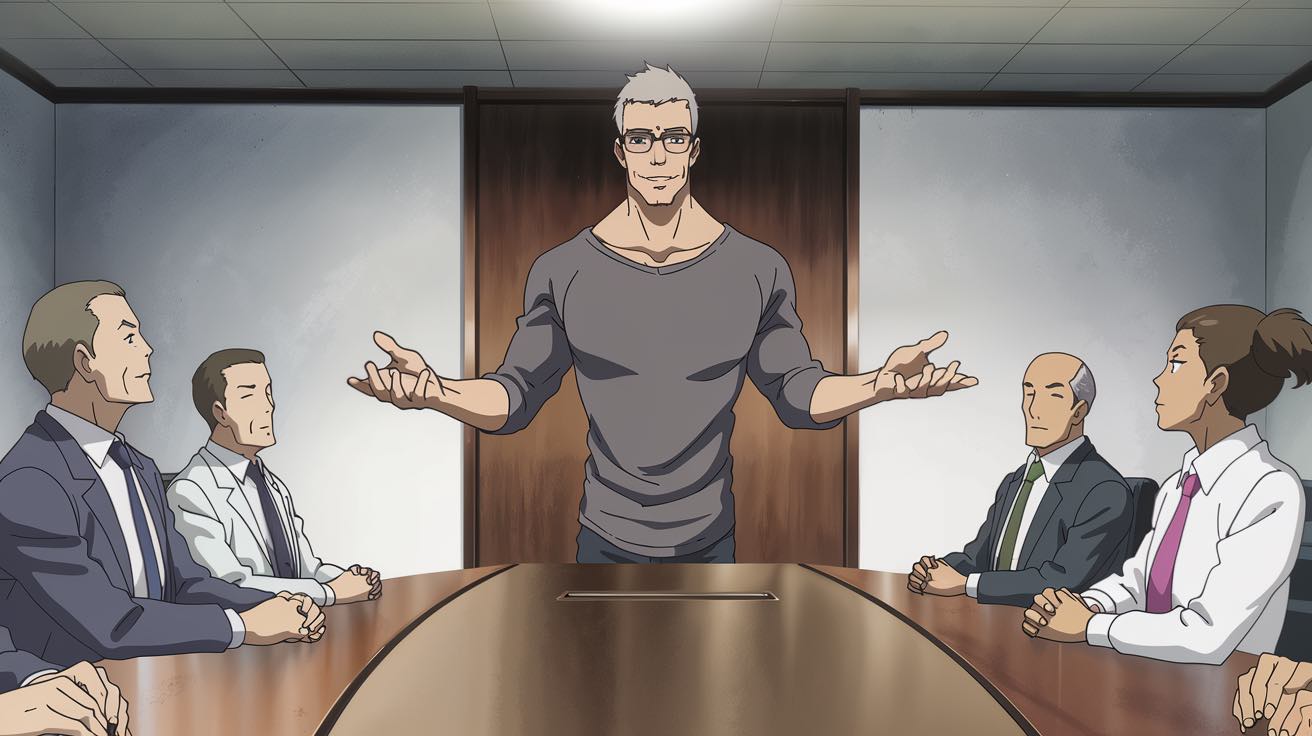Inspire Focus Mobilise: Design & Deliver a Sales Presentation Which Builds Trust, Credibility & Closes
Ever wonder why some sales reps crush their quotas every month while others can barely keep the lights on? Here’s the truth—it’s not just about having the best product or being born with some magical sales charisma. The real difference? Top performers know how to deliver a presentation that moves your prospect to make a decision.
After over 2 decades of pitch speaking to audiences from 3 to 3000, I’ve tried and tested hundreds of ideas for writing and delivering a sales presentation. What works? What bombs? I’ve used it all.
I’ve sat in some of the best (& some awful) sales presentation training courses.
I delivered sales presentation training to entrepreneurs, coaches & sales teams around the world.
My whole philosophy can be summed up in my mantra. INSPIRE – FOCUS – MOBILISE.
So here’s 10 of the “I wish someone had told me this on day 1” insights for you.
Why Presentation Skills Are Your Ticket to Sales Presentation Stardom
In today’s saturated niches, a mediocre presentation isn’t just bad—it’s the kiss of death for your sales today & tomorrow. And here’s the kicker: 70% of people believe killer presentation skills are the key to career success (thanks, Prezi). But here’s where it gets wild—75% of people break out in a cold sweat just thinking about public speaking.
You know what that means, right? If you’re willing to level up your presentation game, that anxiety-filled gap is your (& all sales professionals) golden opportunity to blow past the competition. It’s time to stop blending in and start closing deals like a pro.
Sales Presentation Skills Are Critical
- First Impressions Are Everything: You’ve got just 7 seconds to make that first impression, according to the brainy people in psychology. Blow it, and your audience might already be checking out.
- Keep ‘Em Engaged: Interactive presentations are 1.5 times more likely to be called “very convincing” compared to the static, snooze-worthy ones. If they’re not engaged, you’re losing them. (see 5. for one simple, insanely effective approach)
- The Real Payoff: Nailing your presentation? It can boost your close rates by up to 30%. That’s more deals in your pocket, more commission, and a career that’s about to level up.
The Sales Presentation Skills Training Handbook: 10 Game-Changing Skills for Compelling Sales
1. Master the Art of Storytelling
Ditch the boring facts and figures—nobody remembers those. Instead, tell a story that puts your prospect smack in the middle as the hero. Here’s how you do it with the Before-After-Bridge sales process:
- Before: Paint the picture of where they’re struggling, feeling the pain.
- After: Show them what life looks like once those headaches are gone.
- Bridge: And here’s the magic—your product is the bridge that gets them from struggle to success.
2. Embrace the Power of Silence in Public Speaking
I remember being asked if I’d coach a new pitch speaker who wanted to join the team. It may have been nerves but he just spoke ridiculously fast. It was complete overwhelm after the first few minutes. And no pauses. Like being hit with high pressure water. No time to think. I still don’t know how he managed to take in a breathe.
Don’t fear the silence—use it. A well-placed pause isn’t awkward; it’s essential for sales success. Here’s why:
- Builds anticipation—your audience leans in, waiting for what’s next.
- Makes key points stick—let them absorb the gold you just dropped.
- Gives you a read on the room—see how they’re reacting before you move on.
Try the 3-Second Rule: After you hit a crucial point, pause for three seconds. Let it marinate—it makes your words pack even more punch.
3. Leverage Visual Storytelling for Great Sales Presentations
Your brain processes visuals 60,000 times faster than text. So why bury your audience in words when you can hit them with visuals that stick? Here’s how to do it:
- Use high-quality images that tap into emotions and make people feel something. A sales pitch is emotions before logic.
- Keep it simple with infographics that deliver big impact without the clutter.
- (When relevant) Throw in short video clips for maximum engagement—people love ’em, and they’ll remember what they see.
Most of my slides are very light on words and heavy on image. You develop new skills as a psychologist when you realise sales is about emotions which move people to make a decision.
4. Master the Art of the Demo to Convince New Clients
In product-based sales, a breakthrough demo is the make-or-break moment. Nail it, and the deal’s yours. Screw it up, and you’re back to square one. Here’s how to crush it:
- Customize the demo to hit your client’s exact pain points—make it all about them.
- Talk double-level benefits, not just features—they don’t care how it works; they care how it transforms things.
- Get them involved—whenever possible, let them get hands-on with the product.
Remind yourself, this isn’t a training session for the prospect, this is a convince them session.
5. Use Questions for Engagement – Straight from the IFM Training Program
What happens when you’re asked a question?
Tell me and I have to evaluate if I believe it. But if I tell you – it’s true.
Questions are an incredible tool of influence.
So do you think it would make a big difference to include them in a professional sales presentation?
If I was going to put together a presentation skills training course, would I include a section on what I’ve discovered about using questions?
Without a doubt.
It’s very hard for your brain to ignore a question. It wants to offer an answer.
And questions mean you can avoid being directive so your prospects don’t feel like they’re being lectured too. And instead feel like they’re involved.
When I use a powerpoint slide, it’s not unusual to just have a strategic question on the slide and nothing else.
How often have you been on a sales skills training program where they really drilled deep into the power of questions?
6. Harness the Power of Social Proof to Deliver More Effective Sales Presentations
Nothing sells like success. Want to prove your product works? Bring in the heavy hitters: customer testimonials, case studies, and industry awards. Use real numbers to pack a punch and build instant credibility:
“Company X boosted their ROI by 250% in just six months after using our solution.”
Ideally, wrap these in a story for maximum impact.
7. Master Non-Verbal Communication: Improve your sales skills without saying a word
Your body language is doing half the talking for you. So make sure it’s saying the right things. Here’s how:
- Keep eye contact 70-80% of the time—lock in that connection.
- Use the right gestures at the right times. Be directive with your gestures when you need to be. Be more placating at other times. Gestures matter… a lot.
- Mirror your prospect’s body language—it’s a sneaky way to build instant rapport without saying a word. With an audience you want to be leading quickly.
Remember this: Whenever a group comes together, subconsciously they look for a leader. As the presenter, (and salesperson) that better be you. It’s something I modelled from top sales people. And its the foundation to your presentation strategy.
8. Anticipate and Address Objections: A mini training program in pre-framing
Don’t wait for objections to knock your presentation off track. Get ahead of them before they even come up:
It’s called pre-framing. If you address the objection before they think about it, it adds to your credibility & means the audience carry on listening to you & not talking to themselves in their head.
“You’re probably thinking about the implementation timeline, right? Let me show you exactly how our streamlined onboarding process works…”
If you want your team to improve their sales presentation skills, then finding ways to do this in a story is even more powerful, which means winning sales.
9. Create a Sense of Urgency: Adding strategy to your sales techniques
Want people to take action? Use scarcity and time-limited offers to light a fire under them:
“This special pricing is only available for the next 48 hours. After that, it’s back to regular rates.”
Look, this has been done-to-death in the seminar (& webinar) pitching world, to the point where the audience can see through it and resent it.
But… it’s still a crucial part of any skills training for sales.
The key is it has to be believable and real. Don’t lie. Customer-focused. Help them make the right decision for them.
10. Perfect Your Call-to-Action (CTA): Be more of a coach than a dictator
Don’t leave them guessing. End with a clear, simple next step that makes it easy for them to say yes:
“Let me show you the order form. Here’s exactly what you need to fill out and what happens when you click ‘buy.’ You’ll be set up and ready to go in minutes.”
Clarity helps sales.
Q: How long should my sales presentation be?
A: Aim for 20-30 minutes of core content, leaving ample time for questions and discussion. Remember, it’s better to leave them wanting more than to overstay your welcome.
Q: What if I’m presenting virtually?
A: Virtual presentations require extra engagement tactics. Use interactive polls, encourage chat participation, and break up your content into bite-sized chunks to maintain attention.
Q: How can I handle tough questions during the presentation?
A: Prepare for common objections in advance. When faced with a tough question, use the “Feel, Felt, Found” method:
– “I understand how you feel…”
– “Other clients have felt the same way…”
– “But they found that…”
Conclusion: Add these to your sales presentation skills training
Mastering sales presentations isn’t just about closing more deals—it’s about changing your entire career. These 10 game-changing insights aren’t just tweaks to your pitch; they’re how you transform into a trusted advisor and the go-to problem solver in your industry.
But here’s the thing—becoming a presentation powerhouse is a journey, not a one-and-done thing. Start small. Pick one or two techniques, implement them, and keep improving. With practice and persistence, you’ll soon be standing shoulder to shoulder with the top sales superstars.
Remember. If you want more impact, more sales, to mean more, you have to be able to move prospects to make a decision.




